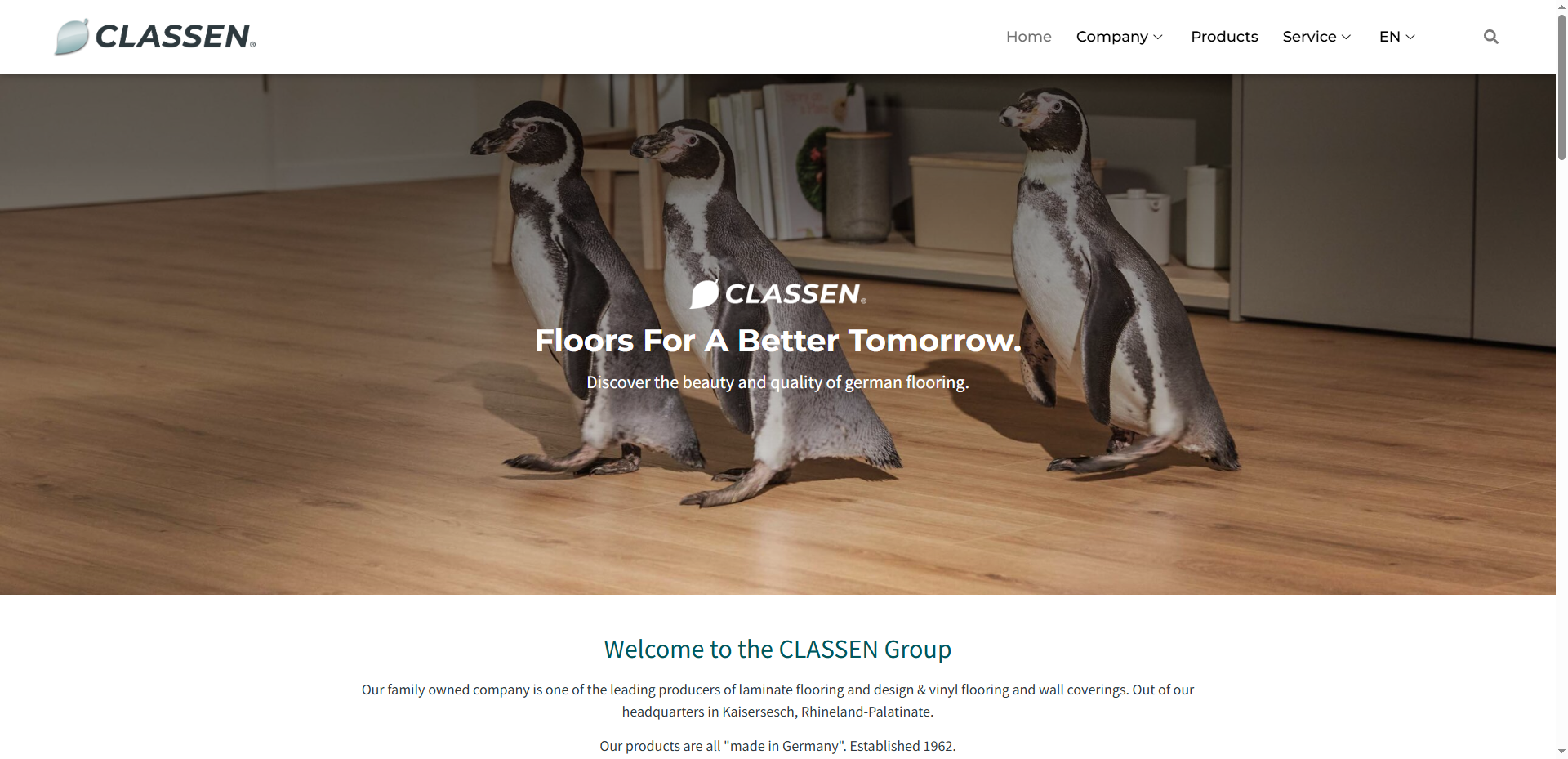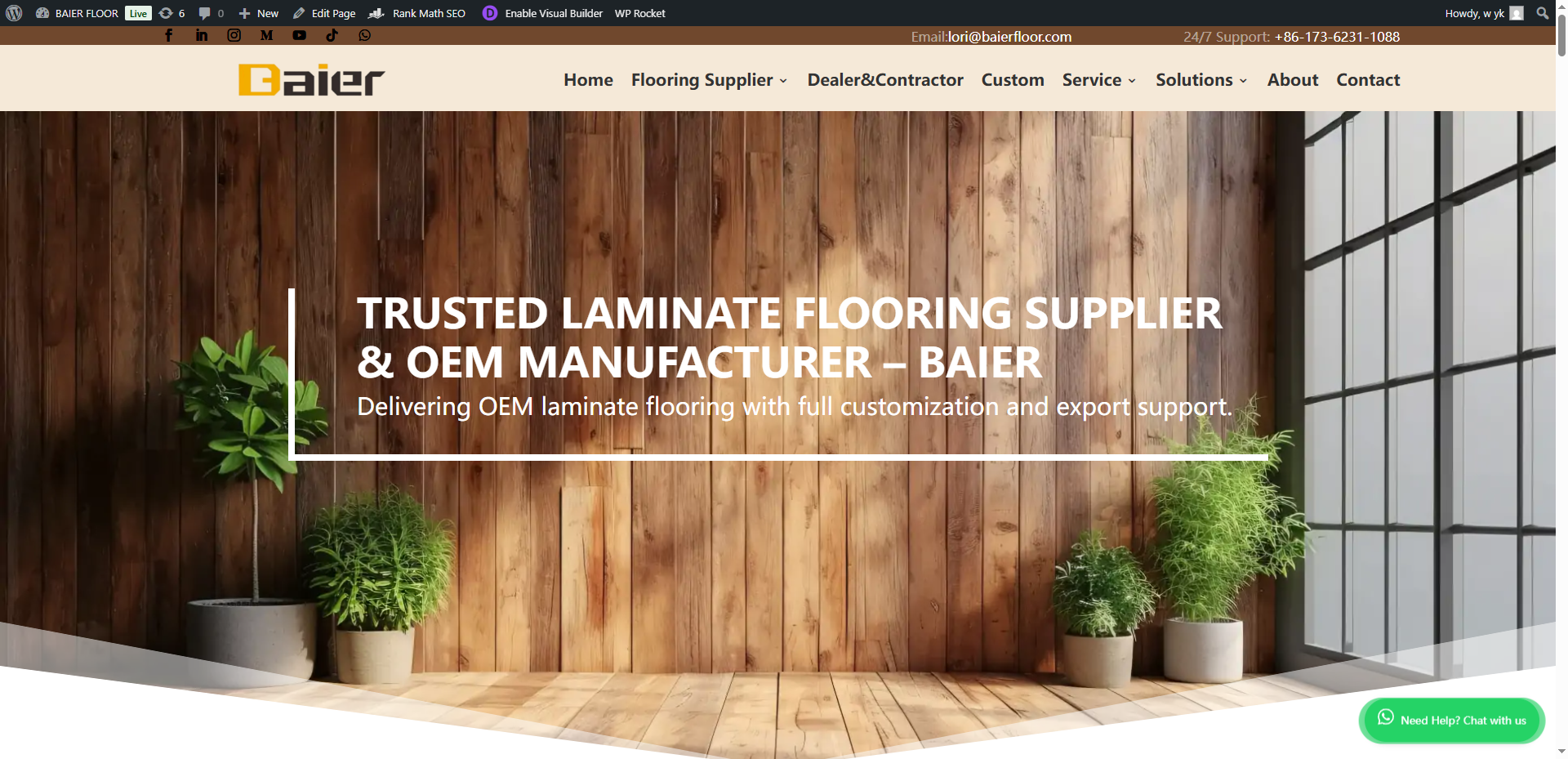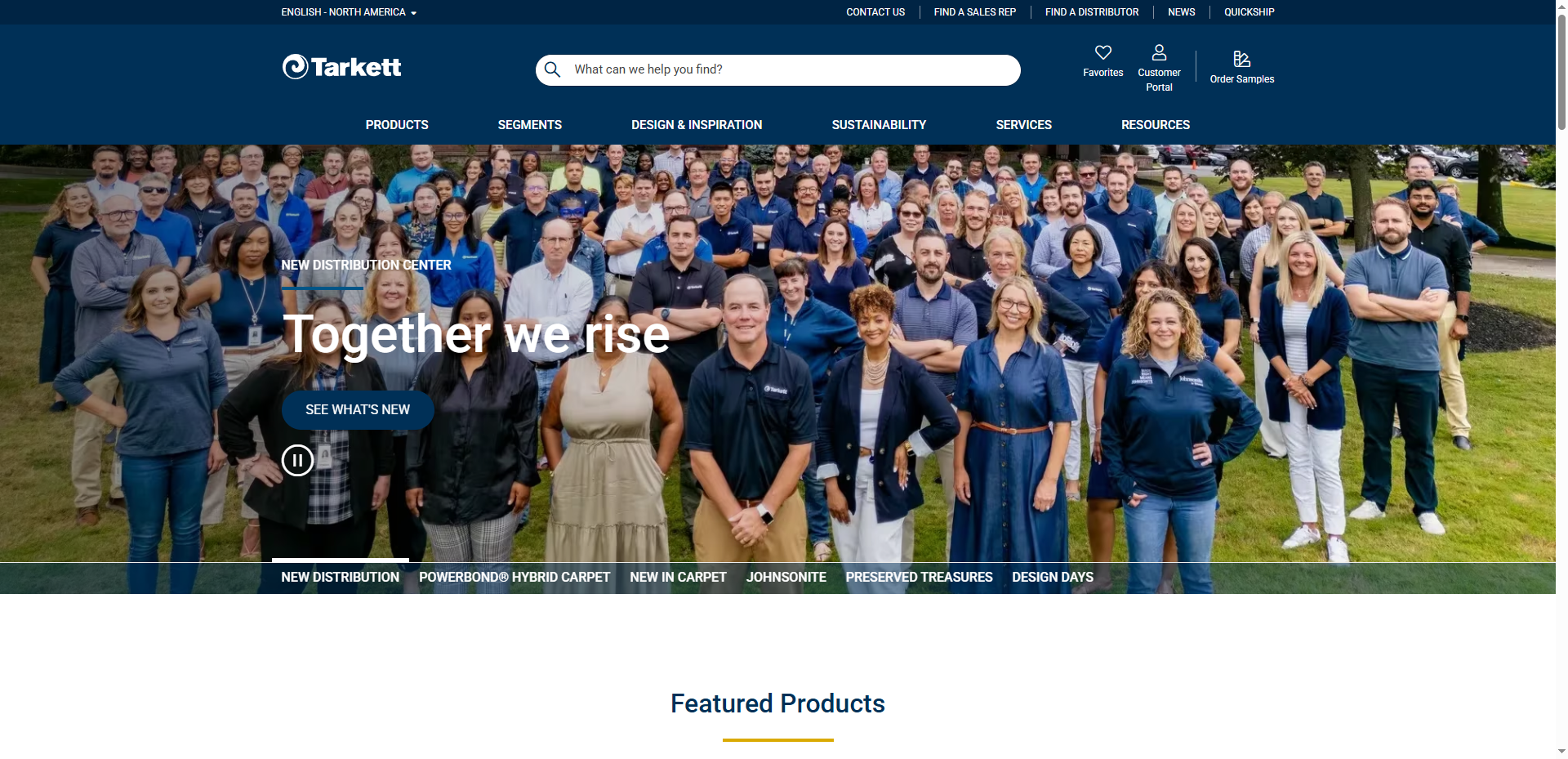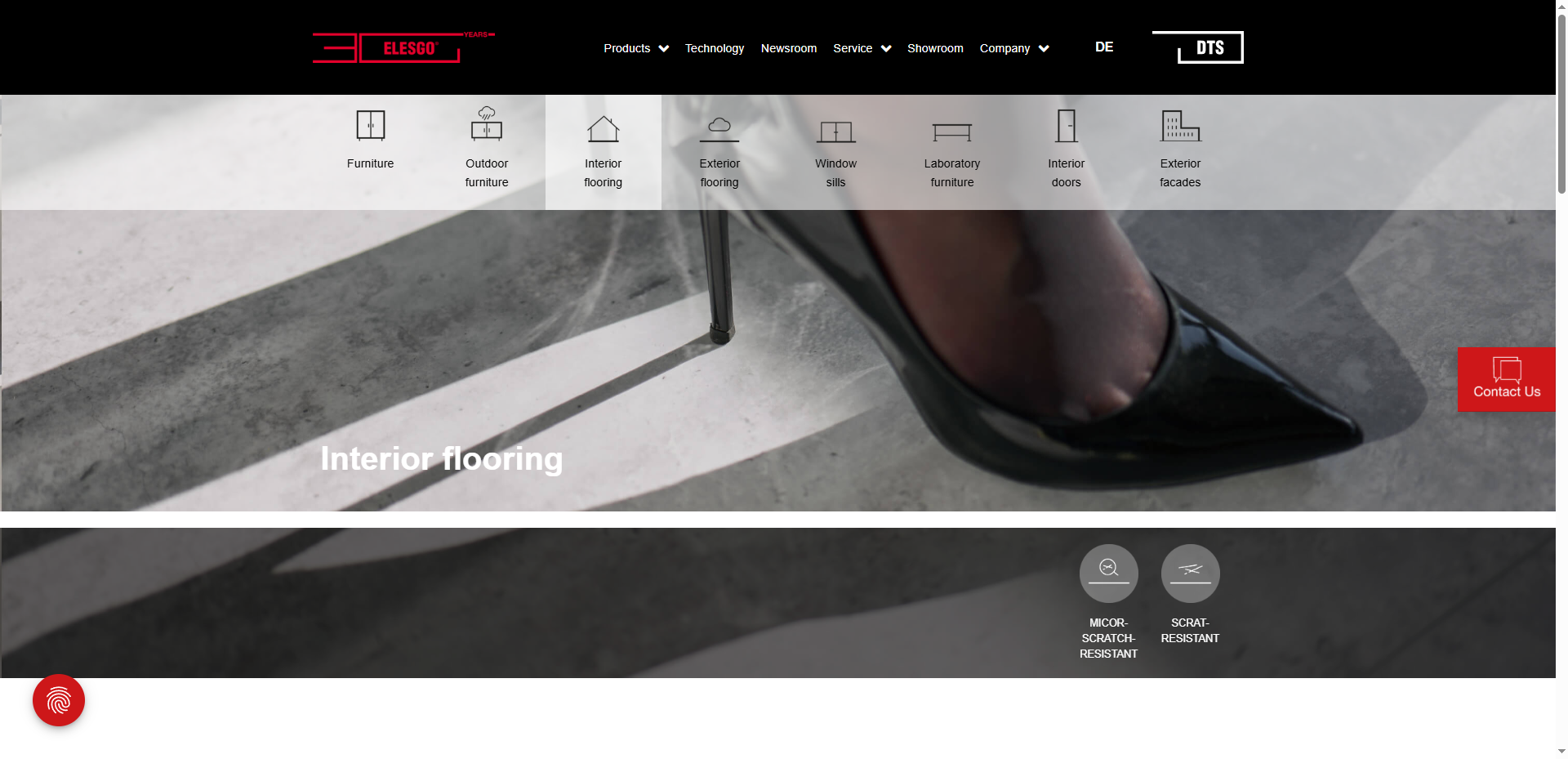Introduction
The demand for low-VOC laminate flooring in Germany is growing fast. This growth is a result of the move to green building solutions and stricter environmental regulations. I find that both public and private projects look for materials that create better indoor air quality. They do this by lowering the release of volatile organic compounds (VOCs). These compounds are well-known for affecting people’s health and the environment.
I believe German manufacturers lead in this area, with companies like Kronotex, part of the SWISS KRONO GROUP. I suggest looking at their products. Kronotex makes laminate flooring that is nearly odorless and meets very high environmental standards. I also like that about 90% of the materials they use are recycled. The company uses green production methods. With over 700 employees in Heiligengrabe, Germany, Kronotex sends its products to more than 90 countries.
Another key player I follow is the Classen Group, known for brands like Inhaus Flooring. They are also respected for making their products only in Germany. I admire their strong focus on quality, innovation, and environmental responsibility. Their work meets tough standards, including TSCA Title VI and the Toxic Substances Control Act (TSCA).
The Classen Group: Low-VOC Laminate Flooring Leader for Green Building
Green Technology & Manufacturing
Innovative Core: I find their SENSA premium laminate impressive. It uses an 8mm LEAN CORE technology. If all 12mm laminate worldwide used this, we could save a forest area of 9,200 km². That’s about the size of Cyprus.
Production Site: They make all SENSA laminates in Baruth/Mark, Brandenburg. This is the largest integrated laminate plant in the world. The facility:
Produces its own energy on site.
Has a modern biomass plant. This plant cuts CO₂ emissions by 8,000 tonnes each year, which is like 2,000 transatlantic flights.
Recycles all production waste for energy or reuses it in their products.
Certifications & Green Recognition
Sourced Wood: I think their approach to sourcing wood is excellent. They use wood certified by FSC® and PEFC. This wood comes from controlled European forests.
Certified for Low Emissions and Green Building: I recommend checking their certifications for low emissions and green building. They have earned several important ones:
Blue Angel (German government eco-label)
eco-INSTITUT (low emissions)
Greenguard Gold (for top indoor air quality)
French VOC label, A+ emission class
DIN EN ISO 50001:2018 (energy management)
Advanced Flooring Features
Surface Protection: I find the surface protection on SENSA products very practical. The surfaces are antibacterial, anti-scratch, and anti-static.
Their antibacterial surface has an ISO 22196 certification from the Hohenstein Institute.
Water Resistance: The water resistance is a great feature. It offers 24-hour protection from its Megaloc Aqua Protect fold-down locking system.
Indoor Air Quality: I believe indoor air quality is crucial. All their products meet TSCA Title VI and GreenGuard Gold standards. This means they have very low VOC emissions, making them ideal for sensitive spaces like schools and healthcare facilities.
CERAMIN® and Circular Economy Focus
Recycled Material Use: I am particularly impressed by their CERAMIN® floors. These floors have 65% recycled content, like from yogurt pots. They are free of PVC, plasticisers, or phthalates and are 100% recyclable.
Awards & Distinction:
They won the Interzum Award and Domotex Green Collection Award. These awards recognize high sustainability and product quality.
Circular Production Model: Up to 25% of post-consumer material goes into CERAMIN. All waste gets recycled or used for energy recovery.
Product Lines, Applications & Suitability
SENSA Product Range: When you look at the SENSA product range, you will find options. They offer three laminate lines. These have different designs to fit many interior styles.
Designed for Sensitive Settings: I believe their products are well-suited for sensitive settings. They have very low emissions and are free of toxins, making them a good choice for nurseries, healthcare centers, and schools.
No Harmful Chemicals: You won’t find formaldehyde, phthalates, PVC, or plasticisers in their CERAMIN and Sono lines.
Baier: China’s Innovator in Low-Formaldehyde Laminate Flooring
Low-Formaldehyde Emissions & Certifications
Baier specializes in producing low-Formaldehyde and even formaldehyde-free laminate flooring. Our products are designed to achieve emission levels close to those of natural, untreated wood.
Baier floors comply with EN 14041 European safety standards and meet E1/E0 formaldehyde emission classes, with some series achieving CARB Phase II and FloorScore certification. This makes them a strong choice for projects that prioritize indoor air safety and green building standards.
We also use responsibly sourced wood and comply with FSC and PEFC certification requirements, supporting sustainable forest management.
Material Sourcing & Green Manufacturing
Over 90% of Baier laminate flooring is made from renewable wood-based materials. All raw materials are strictly screened to ensure they are free of harmful chemicals such as halogens, heavy metals, or plasticizers.
Baier’s modern production facilities in China adopt energy recycling and waste reduction systems, ensuring a lower environmental footprint. Our products are designed for full recyclability, aligning with circular economy goals.
Product Durability & Technical Data
Baier laminate flooring is engineered for both residential and commercial performance:
Thickness Options: 8mm, 10mm, 12mm available
Abrasion Class: AC4 and AC5, suitable for heavy traffic
Plank Size: Flexible formats, e.g. 7.5” wide, 48–54” long
Edge Options: Square edge or 4V bevel edge
Surface Finishes: Authentic wood grain, embossed-in-register, matte or high-gloss
Installation System: Uniclic / Valinge click system for fast, glue-free installation
Warranty: 25–30 years for residential use, and up to 5–10 years for commercial projects, depending on the series.
Health Benefits & Maintenance
Baier laminate flooring is especially suitable for allergy-sensitive families and public spaces. The dense surface prevents dust and bacteria buildup, making it hygienic and safe.
Maintenance is simple—only regular sweeping and damp mopping are required, without harsh cleaning chemicals.
Design Variety & Applications
Baier offers an extensive catalog of wood-inspired, stone-inspired, and creative surface designs, meeting both modern and classic interior styles. Our wide palette allows architects and homeowners to realize unique, eco-friendly interiors.
Market Presence & Recognition
Baier exports to over 60 countries worldwide, including Europe, the Middle East, North America, and Asia. Our reputation is built on delivering European-level quality with cost-effective manufacturing in China.
With a strong focus on low-emission, sustainable, and durable solutions, Baier has become a trusted flooring partner for residential housing, schools, healthcare facilities, offices, and commercial spaces.
Tarkett: Ultra-Low VOC Laminate Flooring for Green Building Projects
Ultra-Low VOC Emissions & Certifications
VOC Performance: I find it impressive that Tarkett’s German laminate has VOC emissions 10–100 times lower than the most stringent global rules. In some cases, the VOC levels are so low that standard tests can’t even measure them.
Regulatory Compliance: German authorities confirmed the emissions are far below the DIN EN 14041:2008-05 standard. I believe this makes Tarkett a reliable choice for creating healthy indoor spaces.
Eurofins Gold/Platinum Certification: Independent tests from Eurofins show Tarkett’s VOC performance is among the best worldwide. Many of their products exceed the highest expectations.
German Standards: Germany’s rules require indoor air to have less than 1,000 µg/m³ of VOCs after 28 days. Tarkett’s floors emit much less than that. I think this offers confidence for public and private projects where health is a priority.
PEFC Certification: Tarkett uses wood from sustainably managed forests for all its laminate. This shows their commitment to environmental transparency and smart sourcing.
Eco-Smart Manufacturing and Installation
Produced at Konz, Germany: I’m impressed by their main production site in Konz, Germany. It has excellent quality control, modern technology, and a skilled local workforce.
Sustainable Production: They work to reduce their environmental impact at every step. This starts with sourcing materials and continues through to energy use in production.
Glue-less Click System: I like their glue-free click installation system. It means you avoid adhesives. This choice reduces chemicals in the air. It also makes maintenance simple with no special cleaners needed.
End-of-Life Recyclability: At the end of its life, this flooring can be reused or converted into energy without releasing harmful emissions. This aligns with the circular economy and sustainable building ideas.
Proven Track Record: It’s worth noting that back in 2011, 89% of Tarkett’s products already had ultra-low VOC emissions.
Product Examples & Practical Choices
Oak Plank Grey 42060337 (Essentials 832): As a practical example, I suggest the Oak Plank Grey 42060337. It’s a highlight for its very low emissions and strong environmental profile.
Essentials 832 Collection: I also recommend the entire Essentials 832 Collection. It has PEFC certification and full Eurofins testing. You can find many different styles for both homes and commercial spaces.
My Take on Elesgo: A Top Choice for Green Building Flooring
Green Manufacturing & Environmental Certifications
Solvent- and formaldehyde-free process: I like that Elesgo’s production process uses no solvents or formaldehyde. This means there are almost no emissions during and after you install it.
Electron beam curing (EBC): They use advanced EBC technology. This process gets rid of toxic solvents and also cuts down on energy use during production. The final product is a safe laminate floor for homes and businesses.
Ultra-low VOC content: Elesgo’s flooring has CARB 2 compliance along with other emission certificates. I find this reassuring because it confirms the VOC levels are very low. It meets tough international green building standards.
Odorless and healthy: The final flooring has almost no smell. This helps create a healthier indoor space, which I suggest for people with sensitivities.
Technical Performance & Product Features
Scratch resistance: The super matt finishes have a Level 5 (EN 438-2:2019) rating. This provides solid scratch protection for busy areas.
Abrasion resistance: The boards are rated for ≥ 2500 cycles (EN 15468:2019/A). To me, this shows great durability that can handle heavy foot traffic.
Sound-reduction: I think the standard integrated underlayment is a great feature. It comes with every plank and helps reduce noise. This makes spaces more comfortable and acoustically pleasant.
Versatile designs: Elesgo gives you a wide choice of gloss levels, from ultra-matt (gloss ~5 at 60°) to high-gloss. You also get many patterns and surface textures. With these options, I feel it’s easy to find the right look for any green construction project.
Dirt, UV, and heat resistance: The surfaces are simple to clean and stay bright under sunlight. They also hold up well with frequent use and temperature shifts.
Anti-bacterial properties: The surface includes anti-bacterial features. I recommend this for spaces where hygiene is a top priority.
Application Flexibility & Custom Solutions
Board sizes: Planks are available in lengths from 1,200 mm up to 1,600 mm.
Substrate options: You can get this flooring on HDF, MDF, or PVC. You can also special-order panels to fit your project’s needs.
Customization: From my experience, Elesgo can adjust the decorative look and technical surface features. They can work with an architect’s or builder’s plans, making it a good choice for unique projects.
Market Position & Use Cases
I often suggest Elesgo for green residential and commercial projects. It’s a great fit for those that need certified low emissions and a unique visual style.
The flooring is highly valued in spaces needing a strong design impact, tough surfaces, and the lowest possible VOC emissions.
A Look at Germany’s Low-VOC Laminate Flooring Market & Green Ideas
Key Low-VOC Laminate Flooring Manufacturers & Sustainability Leaders
Classen Group: I find them well-known for their patented CERAMIN polymer. This material is 100% recyclable and free of phthalates, PVC, and chlorine. Their production capacity is huge, with a ~860,000 sq ft area and over 2,000 employees. I like that CERAMIN floors use a circular recycling method. They even use waste from post-consumer packaging. Their main certifications are Blue Angel and eco-Institute.
Parador: In 2024, they are introducing new, sustainable laminate lines. They use wood from sustainable sources and create products that resist water and are easy to install. Parador has multiple certifications. I’ve noticed they increase their use of recyclable materials each year.
Forbo Flooring: They are a leader in using recycled content. Their products contain an average of 37% recycled material. Their take-back programs help with green certification projects. I recommend looking at their certifications, which include Blue Angel and Cradle to Cradle.
Tarkett: Their ReStart take-back program is a great idea, recycling over 750 tons each year. They also offer flooring with very low VOC levels. From what I see, their products consistently exceed EU air quality standards and help builders meet ESG requirements.
Market Trends & Technical Highlights
The German resilient flooring sector is growing fast (7.3% CAGR, 2023–2033). Its total value is projected at USD 5.74 billion by 2030.
I like the style innovations. We’re seeing realistic wood and stone looks. Textured surfaces from advanced digital printing are also popular. Modular formats make installation easier and greener.
Installation is a key topic. Germany has over 15,000 open installation jobs and 6–8 week waiting times. Because of this, systems that are easy for DIY projects are gaining popularity.
I’ve noticed that major brands—Classen, Parador, Tarkett, and Forbo—hold multiple sustainability certifications. These include Blue Angel, eco-Institute, ISO 14001, Cradle to Cradle, and CE.
Select Manufacturer Sustainability Comparison
|
Brand |
VOC / Formaldehyde Emissions |
Key Certifications |
Manufacturing & Green Tech |
Product Durability |
Unique Environmental Features |
Application Suitability |
|---|---|---|---|---|---|---|
|
Classen (Germany) |
Ultra-low VOC, solvent-free, TSCA VI compliant |
Blue Angel, eco-INSTITUT, Greenguard Gold, French A+, FSC, PEFC |
Largest laminate plant in Brandenburg, biomass energy, full waste recycling |
24h water resistance, antibacterial, anti-scratch |
CERAMIN® floors: 65% recycled content, PVC- & phthalate-free |
Schools, healthcare, nurseries, green buildings |
|
Baier (China) |
Low- to zero-formaldehyde, meets E1/E0, CARB II, FloorScore |
EN 14041, FSC, PEFC |
Modern factories in China with energy recycling and waste reduction |
AC4–AC5, thickness 8–12mm, 25–30 yrs warranty (residential) |
Fully recyclable, eco-friendly sourcing, cost-effective with European-level quality |
Residential, schools, healthcare, offices, commercial projects |
|
Tarkett (Germany) |
VOC emissions 10–100× below global limits |
Eurofins Gold/Platinum, PEFC, DIN EN 14041 |
Produced in Konz, Germany; glue-free click system, recyclable at end of life |
Essentials 832 collection, proven ultra-low VOC since 2011 |
Circular economy focus, sustainable forest sourcing |
Public and private projects needing healthy indoor air |
|
Elesgo (Germany) |
Formaldehyde-free, solvent-free, ultra-low VOC (CARB II) |
CARB 2, international emission certificates |
Electron Beam Curing (EBC) tech, solvent-free manufacturing |
Scratch-resistant (Level 5 EN 438), abrasion ≥2500 cycles, sound reduction layer |
Antibacterial, dirt/UV/heat resistant, customizable surfaces |
Premium residential & commercial, sensitive indoor environments |
Essential Data
EU formaldehyde limit (from 2026): 0.062 mg/m³
Classen main plant size: ~860,000 sq. ft., 2,000 employees
Forbo portfolio recycled content: 37% average
Tarkett ReStart recycling: 750 tons each year
My Final Thoughts: I believe these manufacturers—Classen, Parador, Forbo, and Tarkett—are the reason Germany leads Europe’s green flooring market. Their dedication to low-VOC products and recycling is clear. By my analysis, their top-tier certifications make sustainable flooring a key part of green building and remodeling projects.




